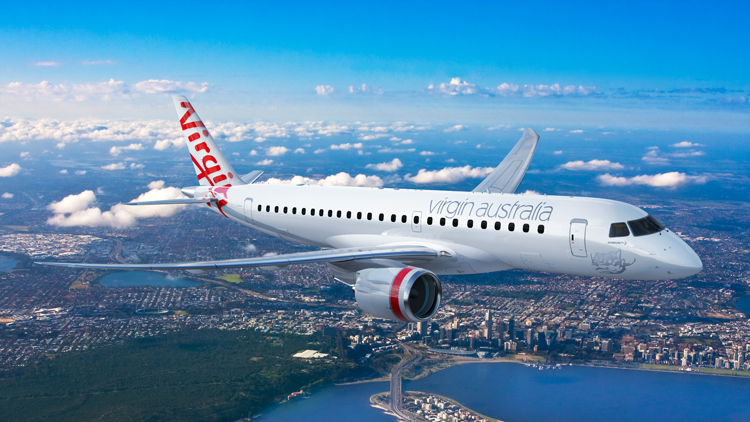Virgin Australia has placed a firm order with Embraer for eight E190-E2 small narrowbody aircraft, as part of its fleet renewal plan. The order will see the E190-E2, the world’s most fuel-efficient single-aisle aircraft with the lowest noise emissions, complement the airline’s larger narrow bodies and replace its long-serving Fokker fleet. The order will be reflected in Embraer’s Q3 backlog and deliveries are scheduled to begin in the second half of 2025.
The announcement event was attended by the Deputy Premier of Western Australia and Treasurer, Minister for Transport and Minister for Tourism, the Hon. Rita Saffioti. Virgin Australia’s E190-E2 fleet will be based in Perth and operated by Virgin Australia Regional Airlines (VARA). The aircraft has a flying range of around six hours and is powered by Pratt & Whitney’s PW1900G engines.
“When the new E190-E2 enters service from October 2025, it will become the first new aircraft in the WA charter market this century,” said Jayne Hrdlicka, Virgin Australia Group CEO. “The E190-E2 is the most fuel-efficient aircraft in its segment and will reduce emissions by about 30 per cent compared to the outgoing F100. These aircraft also feature significantly lower noise profiles and enhanced passenger comfort.”
“When the E190-E2 joins the fleet from late next year it will predominantly operate charter flights for VARA, bolstering its position as a leading operator in the WA charter market.
“This is a huge vote of confidence by the Virgin Australia Group in our charter business and the WA market.”
“The E2 is a game changer,” said Martyn Holmes, Chief Commercial Officer, Embraer Commercial Aviation. “We are excited to welcome Virgin Australia to the Embraer family and look forward to seeing our best in class E2 – renowned for comfort, quietness, and low emissions – take the Airline to even greater heights.”
Building upon the first-generation E-Jets’ 20 years of operational excellence, the E190-E2’s enhanced aerodynamics, novel wing design, and new technologies deliver significant improvements in carbon emissions and fuel burn. It has been certified to fly with blends of up to 50 percent SAF and has demonstrated through test flights the engine’s operability with 100 percent SAF.
Embraer is committed to developing products, solutions, and technologies to contribute to the aviation industry’s goal of achieving net zero emissions by 2050. Embraer aims to be carbon neutral by 2040 and achieve carbon neutral growth from 2022. It plans to implement 25 percent sustainable aviation fuel (SAF) use in its operations by 2040 and 100 percent renewable energy sources by 2030.
Since the first Bandeirante took to Australia’s skies in 1978, Embraer’s has firmly established its presence there with close to 50 aircraft currently operating in the country, making it one of the largest E-Jets fleets in the Asia-Pacific region.


